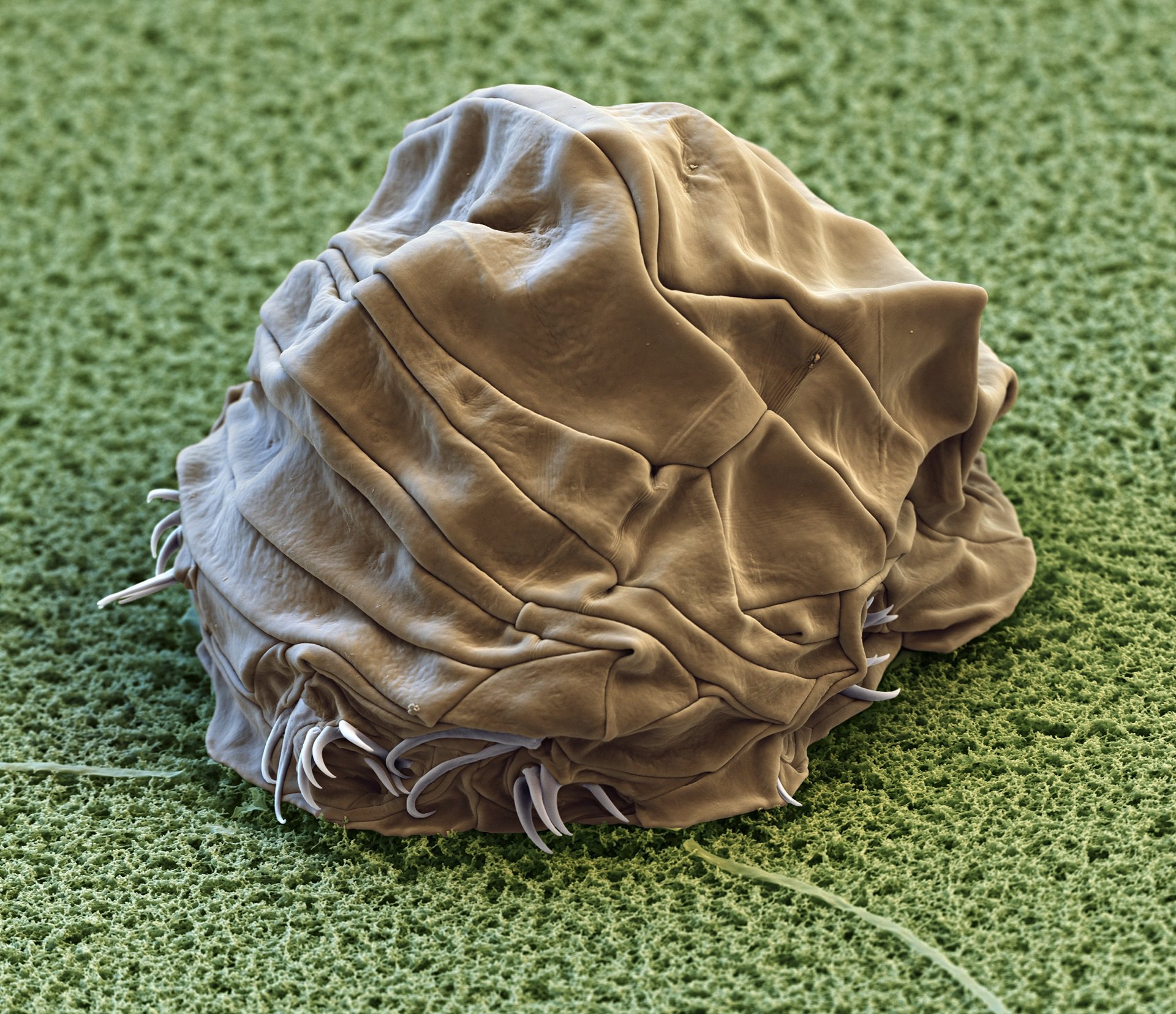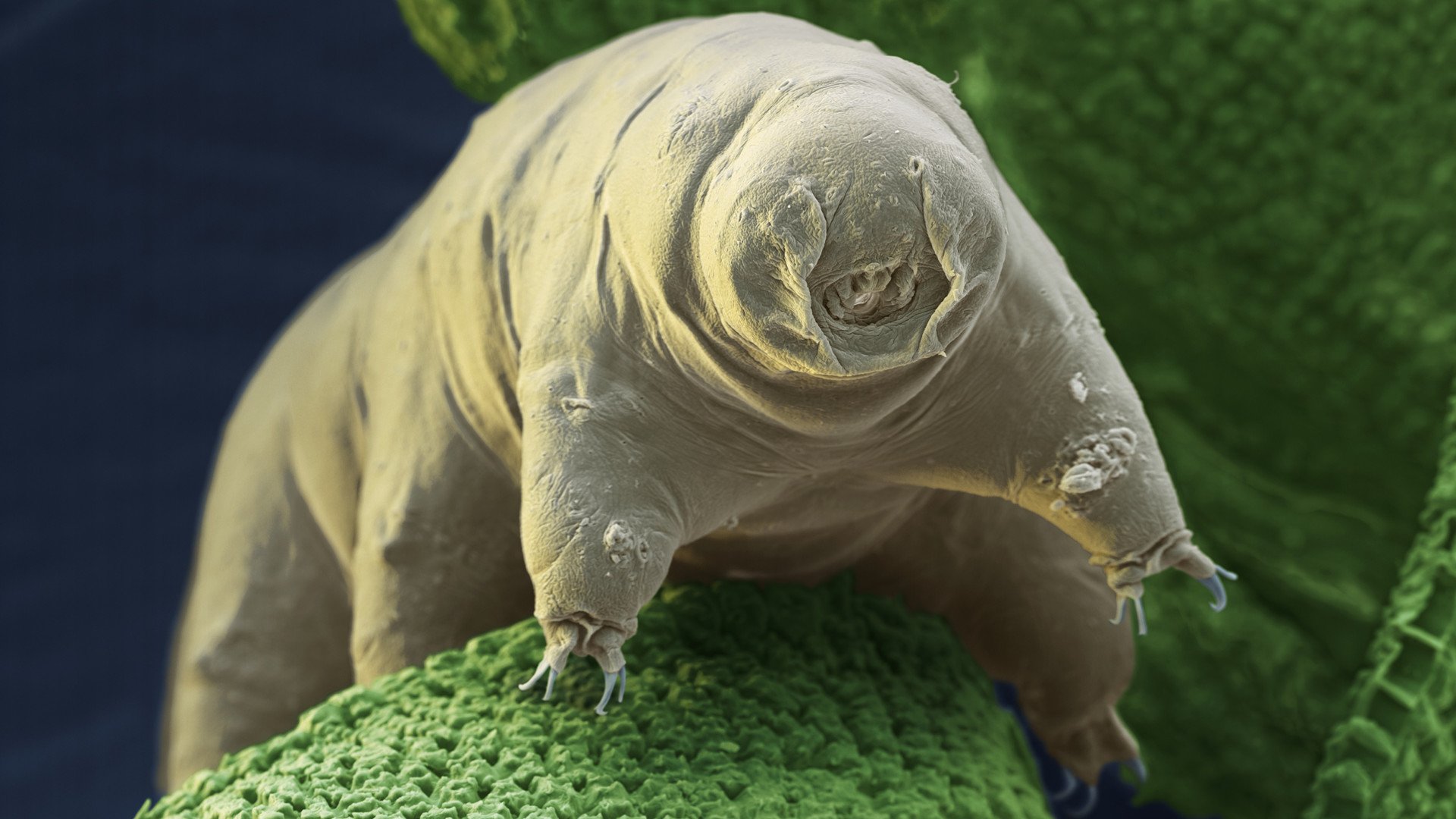Survival ball
Tardigrades are truly the world's best survivors: they have been to space, they have been shot at with guns and they live on the highest mountains and in the deepest oceans. How do they survive these extreme conditions? Tardigrades use a trick called anhydrobiosis. They drain 99% of the water from their body cells, causing them to collapse into a ball. They then make themselves as small as possible, minimising evaporation of the rest of the water. Their metabolism also comes to a virtual standstill. In this state, tardigrades can stay alive for decades, surviving the most extreme conditions.

Protein fortification and antifreeze
What happens to the dehydrated cells of tardigrades in this state? Cells need water to stay alive. Researchers from the University of Tokyo identified a protein in the cells of tardigrades that prevents the cell from collapsing and dying. This protein is called cytoplasmic-abundant heat soluble (CAHS) and is found only in tardigrades. Once the cell dries out, these proteins start to form gel-like threads, which strengthen the cell and keep it in shape. When water then re-enters the cell, the threads retract.
In addition to the CAHS proteins, tardigrades also produce trehalose. This natural sugar binds to the molecules that were first bound to the water, keeping them stable when the water leaves the cell. In addition, it serves as a natural antifreeze. With these two - and perhaps many more undiscovered - substances, bear animals are virtually indestructible.
Tardigrades as teachers
Humans have a lot to learn from water bears. How best to keep cell materials or medicines dry, or how to deal with periods of extreme drought in the future. The researchers from Tokyo hope to discover many more proteins from this special microbe, some of which may also be able to help us.
Source
Tanaka, Akihiro, et al. "Stress-dependent cell stiffening by tardigrade tolerance proteins that reversibly form a filamentous network and gel." PLoS biology 20.9 (2022) : e3001780.

